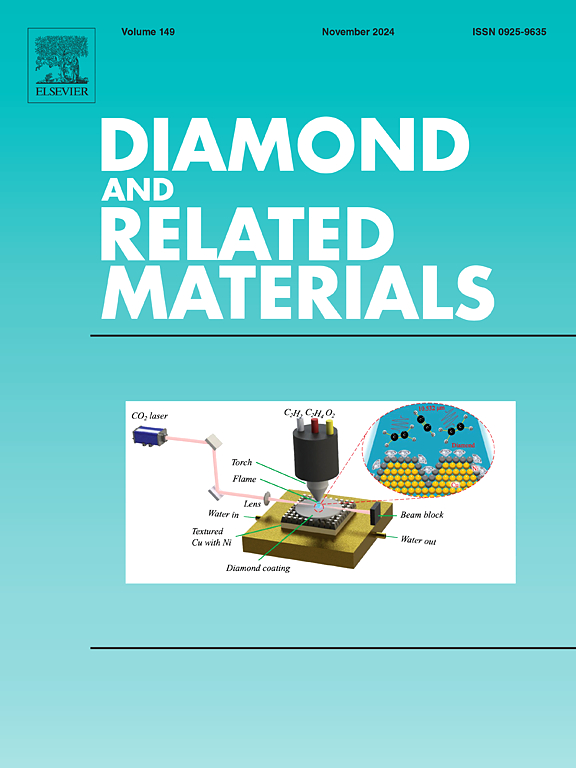基于“预功能化策略”的N, o掺杂剂均匀分散在分层多孔碳中,用于高性能超级电容器
IF 4.3
3区 材料科学
Q2 MATERIALS SCIENCE, COATINGS & FILMS
引用次数: 0
摘要
具有多孔结构的生物质衍生碳作为超级电容器的先进材料显示出巨大的潜力。然而,合理定制表面功能以优化性能仍然具有挑战性。本文采用甘氨酸(Gly)在黄芪多糖(APS)上原位接枝聚合的方法,制备了一系列氮氧共掺杂的分层多孔碳(N, O-HPCs),并进行了活化-碳化。与传统的浸渍技术相比,接枝聚合过程中的Mannich反应可以实现氨基的有意附着,作为APS的氮源。此外,氨基修饰降低了APS的炭化能垒。koh -活性炭具有均匀且高度分散的N和O掺杂物,其特点是具有独特的分层孔隙,结合了相互连接的蜂窝通道和丰富的微/中/大孔。优化后的N, O-HPC-800在0.5 a g−1时具有210.0 F g−1的高比电容,良好的倍率性能(在10 a g−1时仍保持112.0 F g−1),并且具有出色的循环耐久性(10,000次循环后95%)。在功率密度为200 W kg - 1时,组装的N, O-HPC-800对称超级电容器也具有18 Wh·kg - 1的高能量输出。本文章由计算机程序翻译,如有差异,请以英文原文为准。
Uniformly N, O-dopant dispersion in hierarchical porous carbon through “pre-functionalization strategy” for high-performance supercapacitor application
Biomass-derived carbon with a porous structure demonstrates great potential as an advanced material for supercapacitors. However, the rationally customizing of surface functionalities for optimized performance is still challenging. In this paper, a series of hierarchical porous carbons (HPCs) with tailored nitrogen and oxygen co-doping (N, O-HPCs) were prepared by in-situ graft polymerization of glycine (Gly) on astragalus polysaccharide (APS) and followed by activation‑carbonization. Comparing with traditional impregnation techniques, the Mannich reaction during graft polymerization enables the intentional attachment of amino-groups, which serves as nitrogen sources to the APS. Additionally, the amino-group modification reduces the carbonization energy barrier of APS. The KOH-activated carbons exhibit a uniform and high dispersion of N and O dopants, characterized by a unique hierarchical porosity that combines interconnected honeycomb channels with a wealth of micro−/ meso−/ macropores. The optimized N, O-HPC-800 exhibited a high specific capacitance of 210.0 F g−1 at 0.5 A g−1, good rate capability (remain 112.0 F g−1 at 10 A g−1), and outstanding cycling durability (95 % after 10,000 cycles). The assembled N, O-HPC-800|| N, O-HPC-800 symmetric supercapacitor also presents high energy outputs of 18 Wh·kg−1 at power density of 200 W kg−1.
求助全文
通过发布文献求助,成功后即可免费获取论文全文。
去求助
来源期刊

Diamond and Related Materials
工程技术-材料科学:综合
CiteScore
6.00
自引率
14.60%
发文量
702
审稿时长
2.1 months
期刊介绍:
DRM is a leading international journal that publishes new fundamental and applied research on all forms of diamond, the integration of diamond with other advanced materials and development of technologies exploiting diamond. The synthesis, characterization and processing of single crystal diamond, polycrystalline films, nanodiamond powders and heterostructures with other advanced materials are encouraged topics for technical and review articles. In addition to diamond, the journal publishes manuscripts on the synthesis, characterization and application of other related materials including diamond-like carbons, carbon nanotubes, graphene, and boron and carbon nitrides. Articles are sought on the chemical functionalization of diamond and related materials as well as their use in electrochemistry, energy storage and conversion, chemical and biological sensing, imaging, thermal management, photonic and quantum applications, electron emission and electronic devices.
The International Conference on Diamond and Carbon Materials has evolved into the largest and most well attended forum in the field of diamond, providing a forum to showcase the latest results in the science and technology of diamond and other carbon materials such as carbon nanotubes, graphene, and diamond-like carbon. Run annually in association with Diamond and Related Materials the conference provides junior and established researchers the opportunity to exchange the latest results ranging from fundamental physical and chemical concepts to applied research focusing on the next generation carbon-based devices.
 求助内容:
求助内容: 应助结果提醒方式:
应助结果提醒方式:


